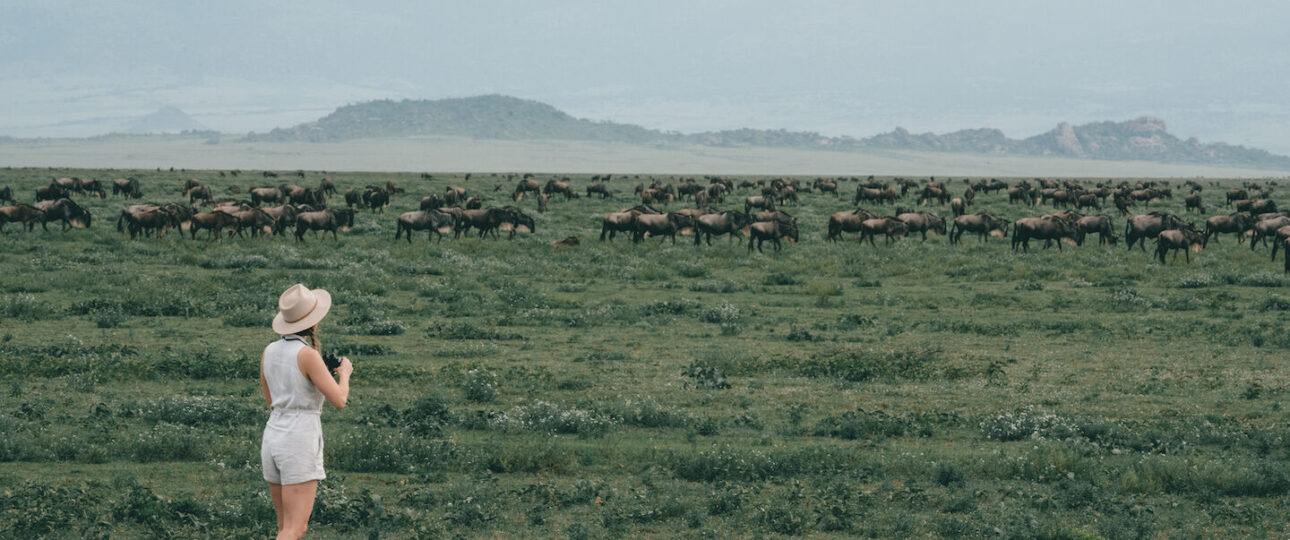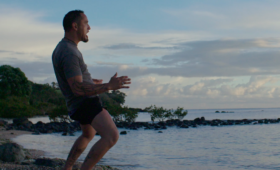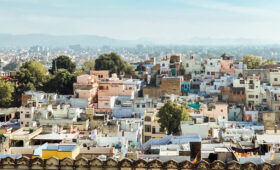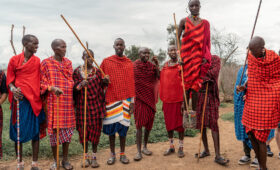There were two major takeaways that came through when talking to the experts, local guides and conservationists. The change in weather due to climate change and urbanization combined with human-wildlife conflict are the biggest threats to East Africa’s wildlife population.
1. Climate change
Climate change is altering the rainy season, which is one of the reasons the animals migrate to Kenya. During rainy season everything is lush and green so they have access to plenty of food and water. When it gets dry, they migrate to follow the rains. Now there’s rain everywhere, so the need to migrate isn’t as urgent.
Two of the local guides I spoke with, JB and Haron, explained they can’t give definitive numbers to show the decrease in migration. But, they definitely have recognized the animals’ patterns are changing. Instead of travelling all together, herds are splitting up to travel in search of food and water. JB also clarified that even though their patterns are now less predictable, they know the migration will continue to happen! It’s the animals’ natural instinct. They’re driven to migrate for food, water and finding a safe space to give birth, but it’s also engrained in them and it’s what they’re used to doing.
2. Urbanization and human-wildlife conflict
Urbanization and human-wildlife conflict are also posing a threat to the wildlife here. As communities and cities grow, they’re taking over the animals’ natural habitats, which leads to more conflict between the humans and wildlife. Locals may have problems with animals and their livestock, or they pose threats to the humans, and if people aren’t properly educated on how to manage this, their instinct is to harm the animals for their own protection.
Who were some of the most memorable people you spoke to on your East Africa Safari trip?
Both of our local guides were awesome! JB and Haron were so full of knowledge and since they’re both locals, they had tons of insider insights to share with us. I also had the opportunity to visit a local Maasai village and chat with the inspirational village leader. He shared how the Maasai tribe are changing their approach to local wildlife and highlighted the importance of education. Since a lot of their typical lands are shared with animal lands and wildlife parks, wild animals are known to threaten their cows and sheep.
The community used to instinctively kill the animals – whether lions, buffalos or other wildlife – but now they’ve learned about the importance of conserving these special species. Before, they never saw the animals as something that should be protected, they saw them as predators. But they’re not just educating their own tribe. Many of the tribe leaders are coming together to teach other tribes about the different, more responsible ways to deal with the animals. Through the sharing of knowledge between tribe leaders and government programs, they use different tactics now, like scaring the wildlife away.

Image source:Nadine Sykora
How can travellers do their part to support wildlife globally?
1. Choose to travel with responsible companies
Opt for a travel company that holds animal welfare as a top priority and chooses non-harmful, ethical activities. On our game drives with the guides always emphasized that we’re in the animal’s habitat. We’re the guests, so we always respected their space. The guides ensured we didn’t get too close to them, unless they came up to us, and we were taught not to disrupt them.
2. Visit wildlife in their natural habitat
Visiting these animals in their natural location supports wildlife, since tourism generates more money for their protection. Contributing to the local economy increases the value in conserving the wildlife versus expanding communities into their land.
3. Raise awareness and share your knowledge
Preserving the animals habitat is crucial, but many people just don’t know how serious the threat is. Especially in Tanzania, tourism is its biggest economic contributor. The country realizes people come from around the world for its natural beauty and discovering its wildlife is a huge factor. We can help by sharing the knowledge and urgency about animal and land conservation, as this results in the country choosing more sustainable ways of commercializing what they have. The goal isn’t to limit the country’s economic growth.
By showing our commitment to experiencing wildlife in an ethical way, this makes protecting them and the open spaces they need to roam, eat and live on more valuable.

Image source:Nadine Sykora
What are your top must-pack items for this trip?
1. Binoculars. Even if you don’t have a camera, you can still see the animals from far away.
2. Something warm. A warm sweater or jacket! Pack warmer than you think because the game drives happen during early mornings and evenings, when the temperature can drop.
3. A love of animals! This trip is different to any other Contiki because the focus really is on the game drives; the amazing wildlife and jaw-dropping landscapes you’ll see.




